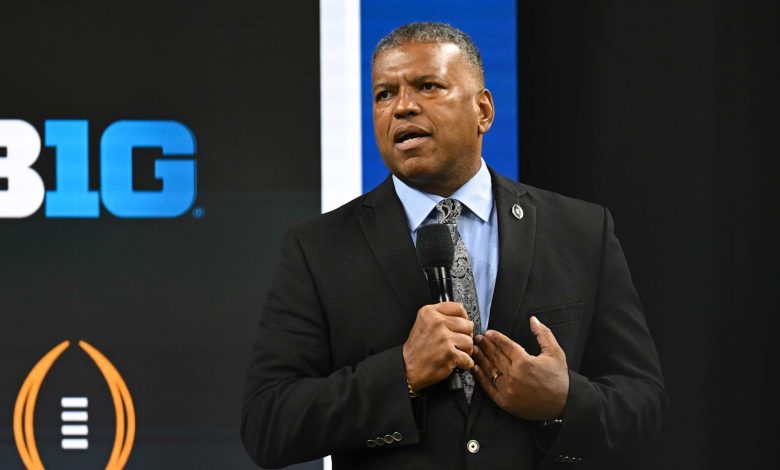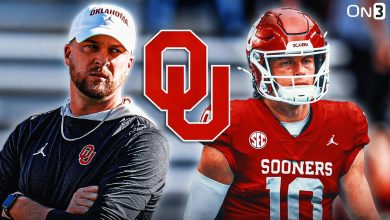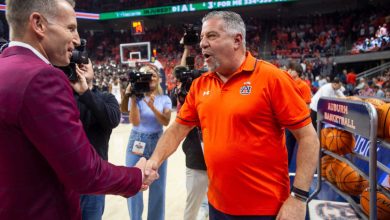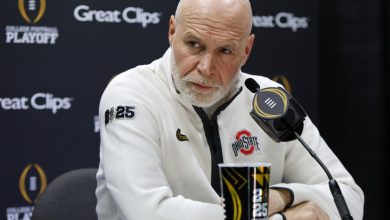NFL and CFP pledge to work together on scheduling in order to prevent future disputes.

In a move that has been highly anticipated by fans, coaches, and sports organizations alike, the National Football League (NFL) and the College Football Playoff (CFP) have agreed to work together on scheduling to prevent future scheduling conflicts that have historically caused issues for both entities. This collaboration, a significant shift in how the two major football organizations approach their respective calendars, is expected to lead to smoother coordination, fewer conflicts, and a more cohesive relationship between professional and college football.
A History of Conflict
The relationship between the NFL and college football has often been contentious, particularly when it comes to scheduling. The NFL season typically runs from September to February, while college football’s most important games—those in the CFP and bowl seasons—also take place in the same window. In recent years, the timing of college football playoff games has created issues with NFL scheduling, particularly around the critical weeks of late December and early January.
The problems often arose when key NFL games overlapped with important college football contests, or when the NFL’s postseason games coincided with the CFP semifinal and final matchups. Fans, players, and coaches from both sides were frustrated, as games were sometimes scheduled during critical times that created scheduling dilemmas. This often led to conflicts in fan attendance, media coverage, and the overall prominence of the games, with both organizations competing for the spotlight during the holiday season.
One of the most prominent examples of these conflicts came in 2023 when the CFP national championship game was scheduled on a Monday night, which happened to coincide with the NFL’s playoff games. This resulted in fans having to make a difficult choice between watching two major events, and some had to sacrifice viewing one event for the other. Moreover, TV networks faced difficult decisions regarding broadcasting, with both the NFL and CFP vying for prime air time.
Additionally, the issue wasn’t limited to fans. NFL players were often drawn into the conversation, as college players were eligible for draft selection in the NFL, creating a sense of competition between the two leagues. It wasn’t just scheduling that created tension; it was also the overlap of talent, the timing of college football’s bowl season, and NFL training camps. Both entities needed to reconcile their schedules to make the sports calendar less chaotic.
The Solution: Collaboration Between the NFL and CFP
Recognizing these scheduling issues and their negative impact on both organizations, the NFL and CFP have come together to form a collaborative effort to ensure smoother scheduling in the future. The goal is simple: eliminate conflicts, increase viewership for both sides, and create a better experience for fans and participants alike. Both organizations understand that they have a shared audience, and it’s in everyone’s best interest to avoid clashes.
The first step toward this collaboration came with a formal statement released by both the NFL and CFP, where they announced that they would work together to develop mutually beneficial schedules that accommodate both professional and college football. This statement included a pledge to avoid major scheduling conflicts and to plan key events so that one does not overshadow the other.
One of the major points in the agreement is the intention to prevent significant overlap between NFL playoff games and the most important college football matchups. To do this, the organizations will share calendars early in the year and negotiate game dates well in advance. This means that the NFL will be conscious of key dates in the college football calendar, and vice versa, making it easier to plan postseason games and championship events without competing for viewership or media attention.
Key Points of the Agreement
Several critical aspects of the agreement between the NFL and the CFP were highlighted, each designed to foster better scheduling harmony.
1. Improved Communication and Coordination
A fundamental part of the new arrangement is increased communication between the NFL and CFP scheduling teams. By sharing critical dates early in the year, both sides can avoid conflicts well ahead of time. The NFL will ensure that its playoff games are not scheduled during the CFP semifinals or championship game. Conversely, the CFP will aim to avoid holding major bowl games or playoff matchups on days that coincide with significant NFL playoff games, such as the opening weekend of the NFL playoffs.
2. Flexible Scheduling
Both organizations agreed that there would be a greater degree of flexibility with scheduling to accommodate special events. This is particularly important when the NFL is in the postseason and the CFP holds its playoff games. One example of this flexibility is the movement of game days for certain high-profile college football games. For instance, if a major college football bowl game or the national championship game falls on a weekend when the NFL has a high-stakes playoff matchup, the CFP may consider moving the game to an alternative day or time slot to minimize competition.
3. Fan and Player Accessibility
Both the NFL and CFP have expressed a commitment to making their events as accessible as possible to fans without causing scheduling conflicts. The hope is to create schedules that allow fans to enjoy both leagues’ big moments without having to choose one over the other. The idea is to give fans the option to follow their favorite teams and players, whether it’s in the college ranks or professional football, without feeling torn between events.
For players, the schedule agreement also creates a less stressful environment. College players aspiring to join the NFL can now participate in the draft process without the distraction of playing in the same window as NFL postseason games. For NFL players, especially those entering the draft, having more well-structured and predictable schedules around college football’s postseason can be a huge relief.
4. Shared Media Coverage
Another key aspect of the new scheduling agreement is the sharing of media coverage. Both the NFL and the CFP have multi-million dollar broadcasting deals with major television networks, and these networks are frequently in a tough spot when trying to juggle coverage of both the NFL playoffs and college football’s championship events. As part of the new collaboration, the NFL and CFP have agreed to coordinate with broadcasters to ensure that both sets of games are given ample airtime and promotion, rather than competing for attention.
For example, if the NFL has a high-profile playoff game and the CFP has a key semifinal or championship game, there will be an effort to stagger the start times so that broadcasters can cover both events without overlapping. The networks can then focus on producing the best coverage possible for each event, knowing they won’t be scrambling to choose which game to prioritize.
5. Strategic Partnerships
The NFL and CFP also plan to create strategic partnerships between teams, players, and alumni associations to build more excitement around both leagues. By collaborating in this way, the two organizations can better engage with their fanbases, create cross-promotions, and even organize events that highlight the synergy between professional and college football.
For example, the two organizations might work together on joint events to promote draft prospects, or they could leverage NFL players who are former college stars to promote upcoming CFP games. This partnership not only fosters a sense of unity between the leagues but also creates opportunities to elevate the visibility of both leagues throughout the year.
Impact on Fans and Players
The collaboration between the NFL and CFP is bound to have a positive impact on both fans and players alike. Fans will no longer have to choose between attending or watching major games in both leagues. This means that during the holiday season, when both leagues are at their peak, football fans can enjoy uninterrupted viewing of key games in both the NFL and college football.
For players, this agreement ensures that they don’t have to contend with scheduling conflicts that might impact their visibility and preparation for professional football. College players preparing for the NFL draft will now be able to play in their playoff games without worrying about conflicting with an NFL postseason game, while professional players can enjoy a more streamlined lead-up to the draft and offseason activities without the distraction of overlapping schedules.









